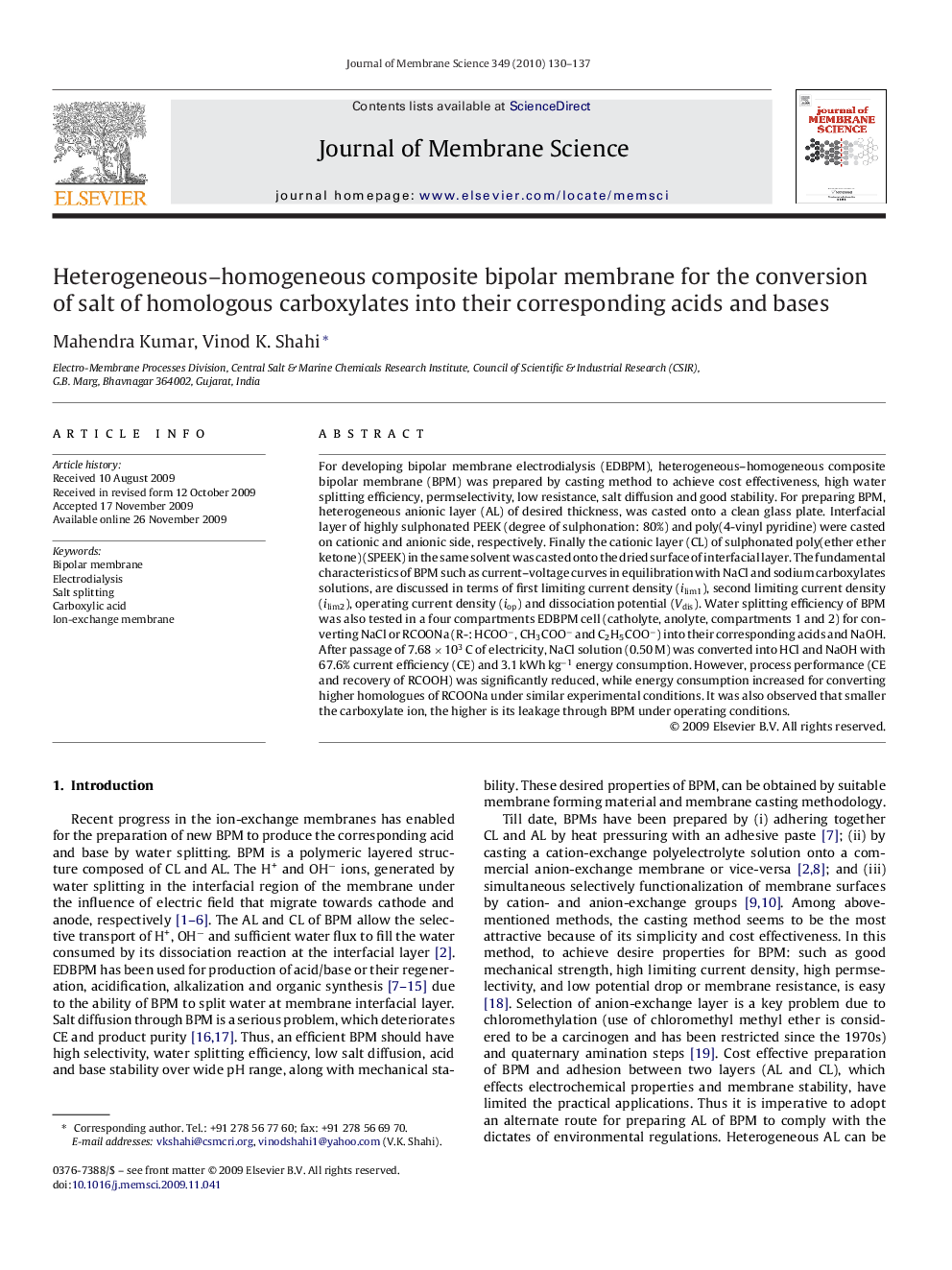| Article ID | Journal | Published Year | Pages | File Type |
|---|---|---|---|---|
| 636588 | Journal of Membrane Science | 2010 | 8 Pages |
For developing bipolar membrane electrodialysis (EDBPM), heterogeneous–homogeneous composite bipolar membrane (BPM) was prepared by casting method to achieve cost effectiveness, high water splitting efficiency, permselectivity, low resistance, salt diffusion and good stability. For preparing BPM, heterogeneous anionic layer (AL) of desired thickness, was casted onto a clean glass plate. Interfacial layer of highly sulphonated PEEK (degree of sulphonation: 80%) and poly(4-vinyl pyridine) were casted on cationic and anionic side, respectively. Finally the cationic layer (CL) of sulphonated poly(ether ether ketone) (SPEEK) in the same solvent was casted onto the dried surface of interfacial layer. The fundamental characteristics of BPM such as current–voltage curves in equilibration with NaCl and sodium carboxylates solutions, are discussed in terms of first limiting current density (ilim1), second limiting current density (ilim2), operating current density (iop) and dissociation potential (Vdis). Water splitting efficiency of BPM was also tested in a four compartments EDBPM cell (catholyte, anolyte, compartments 1 and 2) for converting NaCl or RCOONa (R-: HCOO−, CH3COO− and C2H5COO−) into their corresponding acids and NaOH. After passage of 7.68 × 103 C of electricity, NaCl solution (0.50 M) was converted into HCl and NaOH with 67.6% current efficiency (CE) and 3.1 kWh kg−1 energy consumption. However, process performance (CE and recovery of RCOOH) was significantly reduced, while energy consumption increased for converting higher homologues of RCOONa under similar experimental conditions. It was also observed that smaller the carboxylate ion, the higher is its leakage through BPM under operating conditions.
